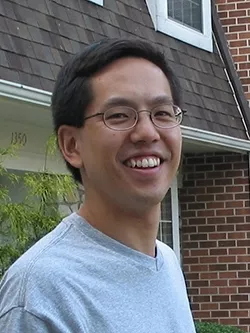Decoding Extinction

Professor of Statistics Steve Wang
A new National Science Foundation grant awarded to Professor of Statistics Steve Wang will help him, his students, and a recent alumna decode why the Earth may be entering a modern extinction.
Scientists have generally agreed that during the past 550 million years, five mass extinctions already have occurred on Earth. Many long-lived groups are becoming threatened, says Wang, even ones that have survived for millions of years. That’s the kicker; previous studies of the fossil record—known from Earth’s sequence of rock layers—have shown that older groups were generally less likely to go extinct.
Wang and his students, including Zoey Werbin ’17, who came up with the idea of investigating age selectivity and seeing how that has changed over time, will use statistical methods to compare modern and ancient extinctions to gain clarity on extinction risk and to identify threats to biodiversity.
“Many plant and animal groups are being threatened as a result of human activity and its consequences, such as climate change, habitat loss, and over-hunting and over-fishing,” says Wang. “For example, shark populations have declined dramatically because they are caught as by-catch in commercial fishing, and because of over-exploitation for shark fin soup. Other groups such as tigers have had their habitat reduced and fragmented due to urbanization and agriculture.”
As a biology major, Werbin was a student in Wang's Stat 11 course. Wang had talked about the Paleobiology Database when discussing his past research and Werbin was introduced to the IUCN Red List through a Conservation Biology class.
Later, as part of an independent study, Werbin explored the relationship between the age of the taxon (a biological group) and its extinction risk collaborating with Wang and scientists from Stanford and the Department of Integrative Biology and Museum of Paleontology at UC Berkeley.

Zoey Werbin '17 is now a data science intern at the Oak Ridge National Laboratory Distributed Active Archive Center.
“Zoey had taken my class and later asked to do an independent study with me,” says Wang. “We were discussing possible topics that would combine her interest in environmental science with my interests in extinctions in the fossil record. She came up with the idea of investigating age selectivity and seeing how that has changed over time.”
Werbin and Wang have continued this line of research on extinction.
“I had the idea to put the two databases in conversation,” says Werbin. They did some initial analyses that spring, and last fall Wang applied for the NSF Sedimentary Geology and Paleobiology grant.
“It was motivated by the observation that long-lived taxa such as sharks, which have survived multiple mass extinctions, are threatened with extinction now,” says Werbin, now a data science intern at the Oak Ridge National Laboratory Distributed Active Archive Center, a NASA-funded data center for biogeochemistry data.
“We followed up on a pattern that Steve previously published on: long-lived taxa are less likely to go extinct during normal, "background extinction" events, but during mass extinctions, taxa of different ages are equally likely to go extinct,” says Werbin.
Evidence points to human activity as the cause of increasing modern extinctions, Wang says.
During background extinctions, the rates at which new species form and the rates at which species go extinct are balanced, to some degree, says Werbin. “An increase in extinction rates can cause widespread and rapid decreases in biodiversity,” she says. “There are different thresholds for what counts as a mass extinction…each of these "Big Five" resulted in the loss of over 70 percent of species.”
Looking at data on which species are currently threatened with extinction, helps to see if the current patterns reflect typical background extinctions, or, if they reflect a more serious mass extinction, say Wang and Werbin. So far, their data has shown no relationship between taxon age and extinction risk, she says, but they will spend this summer extending those results.
Wang and Werbin are excited to see this idea expand this summer, as more Swatties will be joining the project: Haochen Wang ’20, Clara Habermeier ’17 and John Wojciehowski ’19.
"We’ll have perspectives from mathematics, statistics, computer science, and biology,” says Werbin. “I’m thankful that Swarthmore encourages this type of interdisciplinary collaboration.
To learn more about how Swarthmore is investing in its vibrant intellectual culture, visit lifechanging.swarthmore.edu.



